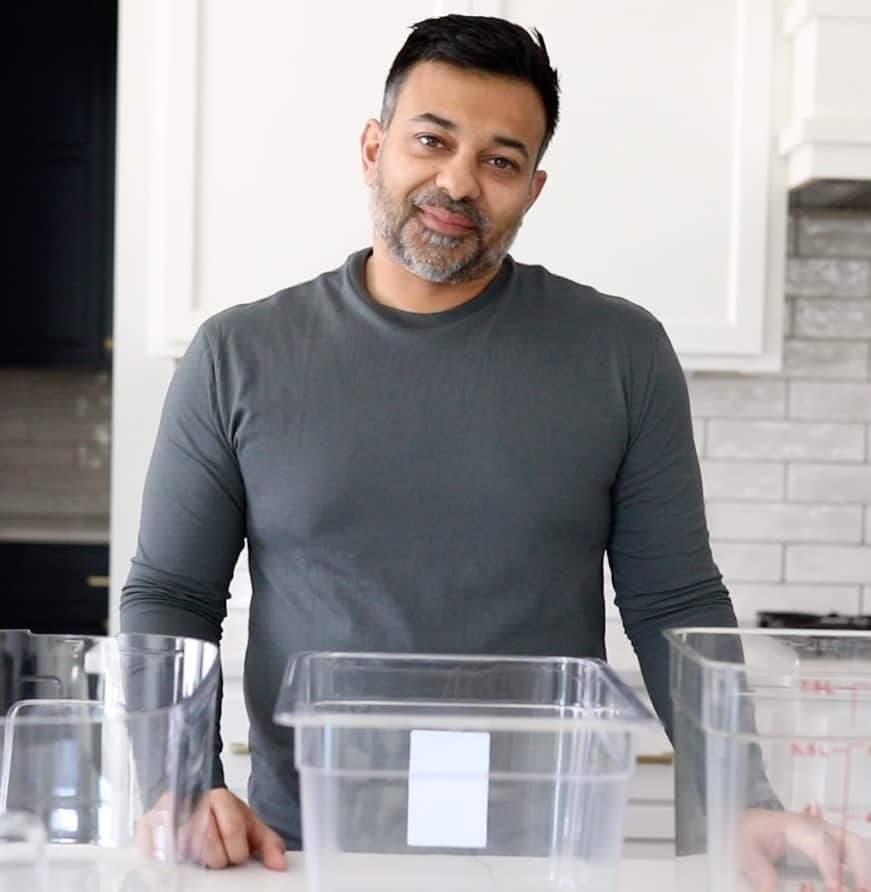If you’ve heard about the water displacement method for sous vide, but are looking for a little help in executing it, you’ve come to the right place! Below I’ll walk you through simple step-by-step instructions on how to execute the water displacement method sous vide, with both a video and pictures.
All you need is a freezer grade Ziploc-like bag or a Stasher-like silicone bag and water in a container. Both the Ziploc freezer bags and the Stasher silicone bags are BPA-free, just make sure what you use is as well.
The principle is quite simple, very easy to execute, and brilliantly useful. Simply place food in the bag of your choosing, fill a container with water sufficient to cook your item, and slowly lower the bag into the water while sealing it to void it (i.e. displace it) of all air.
Table of Contents
Water Displacement Technique Video
Water Displacement Method, Step-by-Step Guide
Step 1: Place Sous Vide Food Contents in Bag
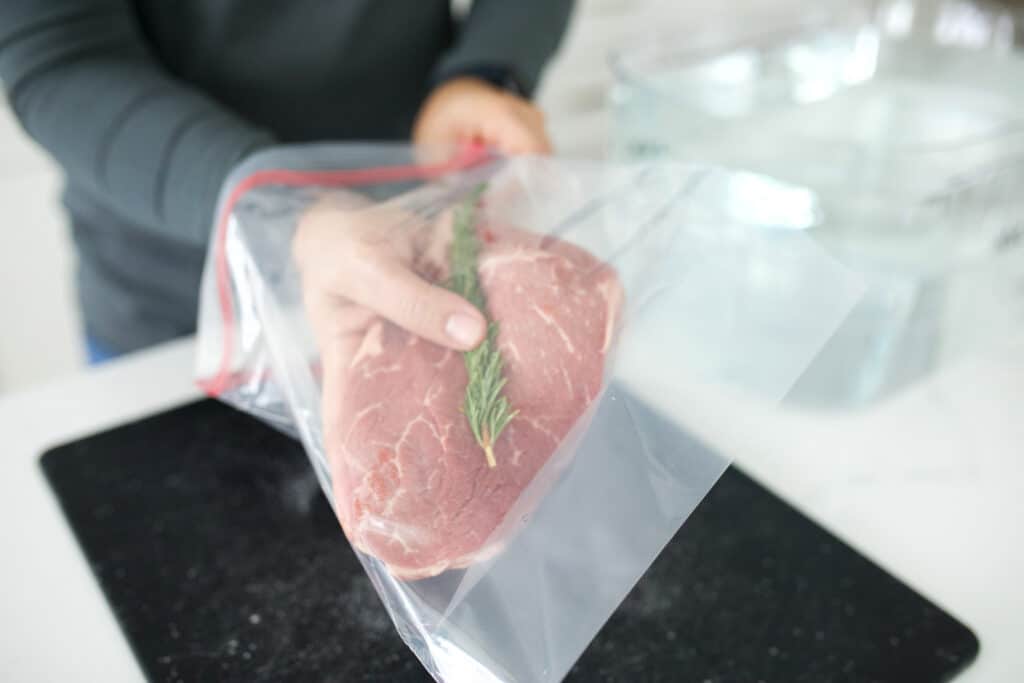
Place your food in your Ziploc-like freezer bag or Stasher-like bag. Include all items you plan to cook with (e.g. aromatics, marinade, etc.)
Step 2: Seal Bag Most of the Way, leaving about 2″ Open
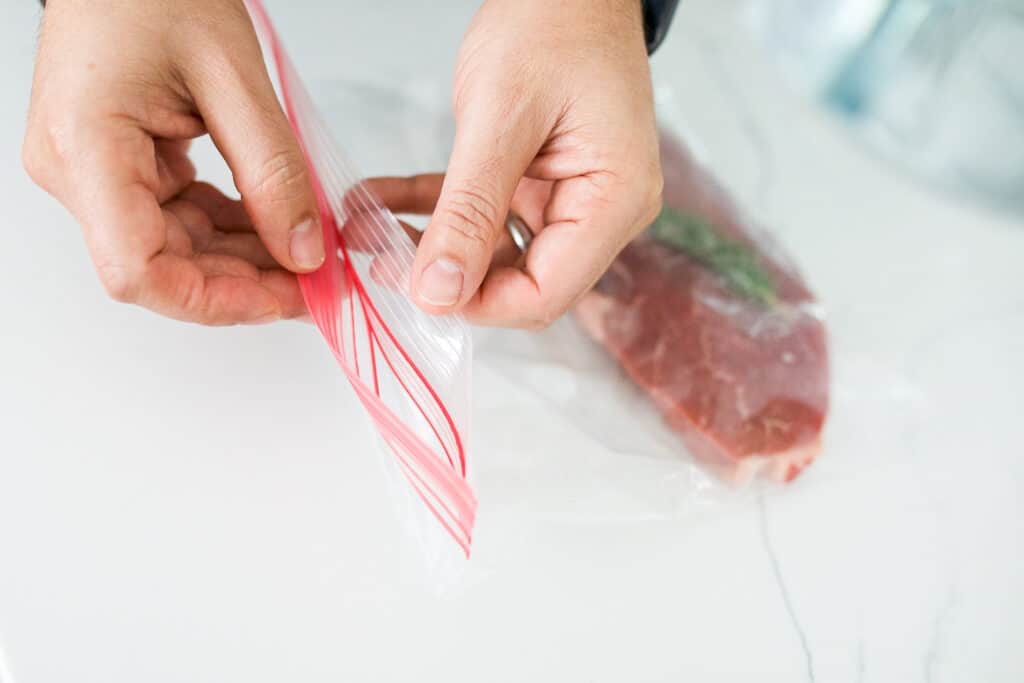
Seal bag most of the way, leaving roughly two inches open from a corner.
Step 3: Displacement Method – Submerge Bag to Water Line & Fully Seal
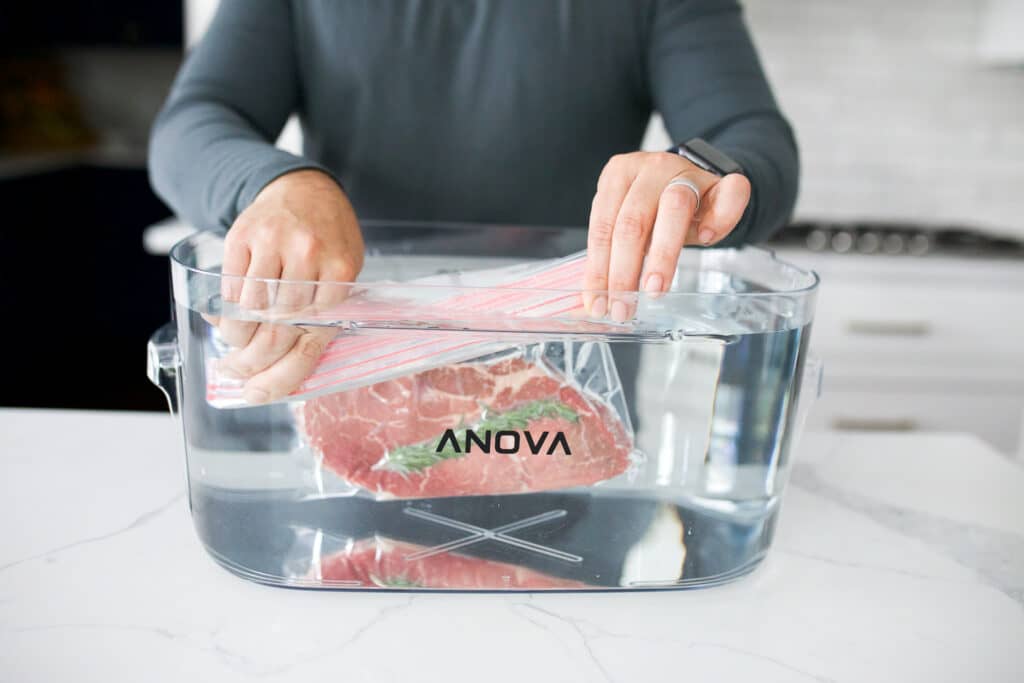
Have a sous vide container of water ready, enough so to fully submerge the bag. Slowly submerge the bag until only the unsealed portion is out of the water. Then, with the unsealed portion just above the water line, seal the remaining two inches.
Doing so forces any remaining air out of the bag. Be careful not to get any water in the bag. Ensure the bag is fully sealed.
Now your food is ready to sous vide!
Beyond Sous Vide – Vacuum Seal Without a Machine
This is a vacuum sealing hack, so pretty much any uses for vacuum sealing can be applied to this method.
Air causes food to oxidize, which according to our friends at the University of Nebraska, is a primary factor in food spoiling. Using the displacement method before refrigerating or freezing food can help keep it fresher for longer.
That said, if you’re looking for an affordable vacuum sealer, I’d recommend the INKBIRDPLUS Vacuum Sealer. It’s my pick for the best value vacuum sealer and you can read about it here.
Expert Tips
Use these tips when using the water displacement technique:
- Massage any air out of the bag around the food, once the food portion of the bag is underwater.
- Do not stack items in a bag. That is, you want a single layer, so as much of the food is exposed to the water temperature as possible.
- A Ziploc-like freezer bag is relatively easier to use with this method than a Stasher-like bag.
- Do not attempt this in water that has reached your sous vide temperature. Ideally, do it before you turn your sous vide machine on, or in a separate container if you forgot to do it before.
- Freezer grade Ziploc-like and Stasher-like bags should be plenty durable to be used for cooks up to 8 hours; for any longer we would at a minimum double-bag items, if you don’t have a vacuum sealer, for peace of mind. If double-bagging, just make sure both bags are free of any air. The best sous vide bags can be found here.
- Don’t fret over getting every last bit of air out of the bag, but do try to make sure there’s no air around the food itself; this will ensure even cooking.
- When sous vide cooking, clip the bag to the side of your container with the food portion fully submerged, or use sous vide weights, magnets, or a sous vide rack.
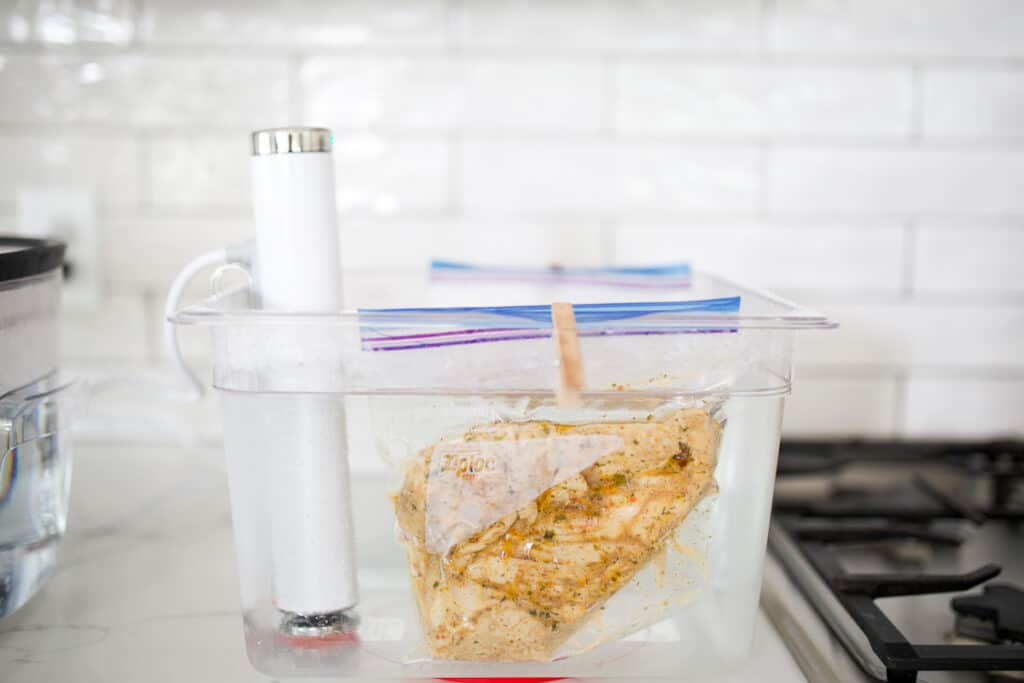
Water Displacement Method Sous Vide FAQs
The water displacement method for sous vide is one of two options for bagging when sous vide cooking. You need to ensure all of the air is out of the plastic bags containing food when using sous vide. One option is to use a vacuum sealer, the other is to use the water displacement method. For the displacement method, you:
1. Bag the food in a freezer grade Ziploc or Stasher bag
2. Seal bag most of the way, leaving roughly 2″ open
3. Submerge the bag into a container of water so that the unsealed portion is just above the water line. Then seal the unsealed portion.
Yes, you can! We recommend you use freezer grade bags with a double layer of seals. Simply use the water displacement method to void the ziplock of any air. For cooks over 8 hours, we would double bag at a minimum, but would use a vacuum sealer ideally.
The water displacement method will effectively vacuum seal a bag. For the displacement method, you:
1. Bag the food in a freezer grade Ziploc or Stasher bag
2. Seal bag most of the way, leaving roughly 2″ open
3. Submerge the bag into a container of water so that the unsealed portion is just above the water line. Then seal the unsealed portion.
Yes, you can! Just use the water displacement method. For the displacement method, you:
1. Bag the food in a freezer grade Ziploc or Stasher bag
2. Seal bag most of the way, leaving roughly 2″ open
3. Submerge the bag into a container of water so that the unsealed portion is just above the water line. Then seal the unsealed portion.
For cooks that are 8 hours or more, we would recommend a vacuum sealer.

